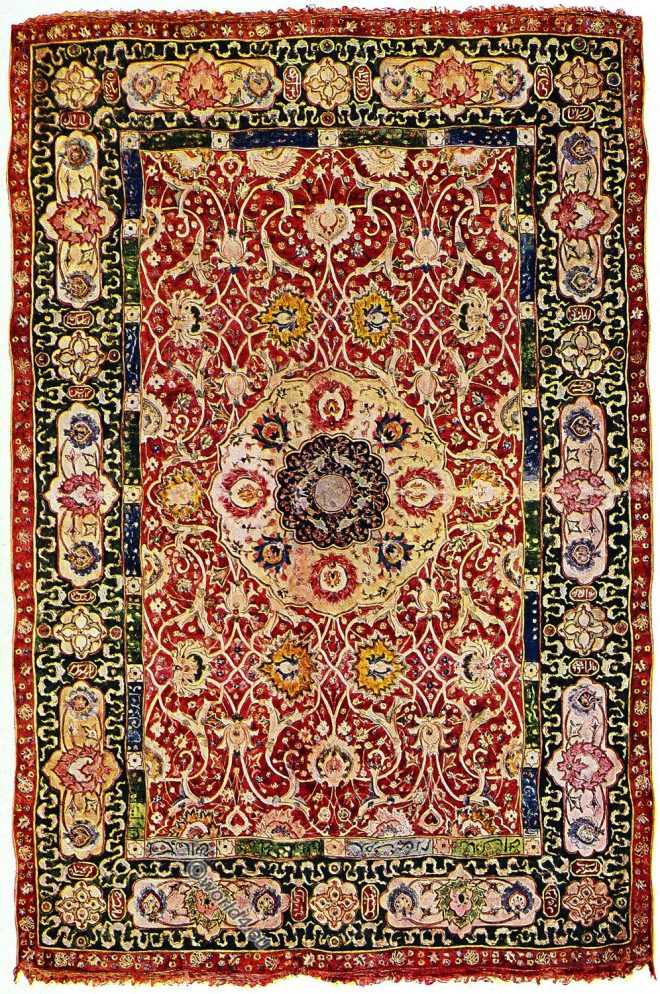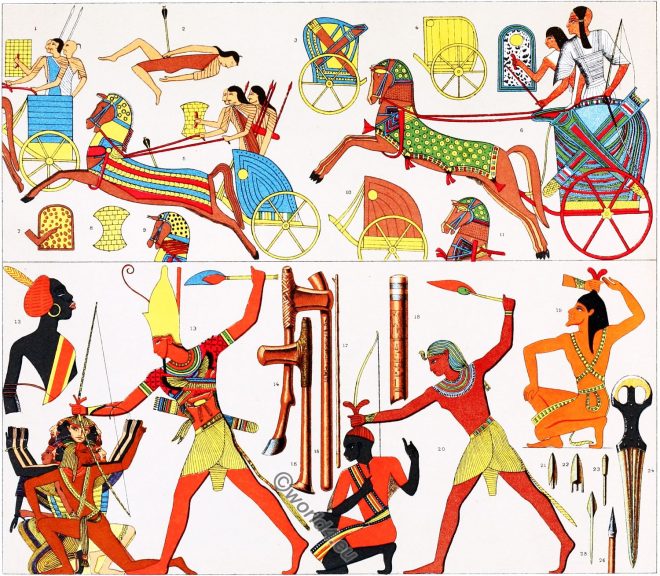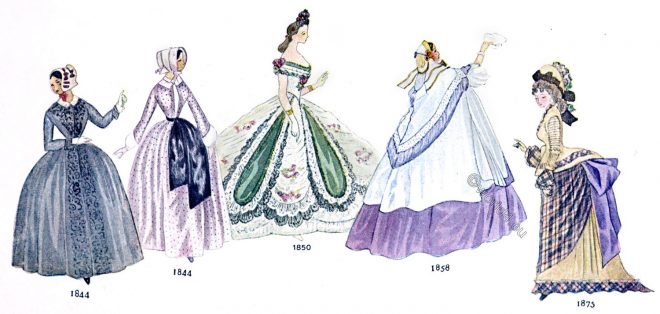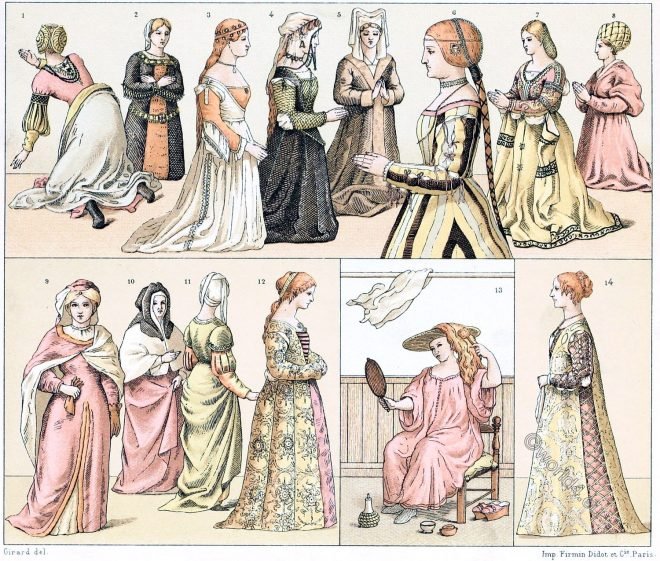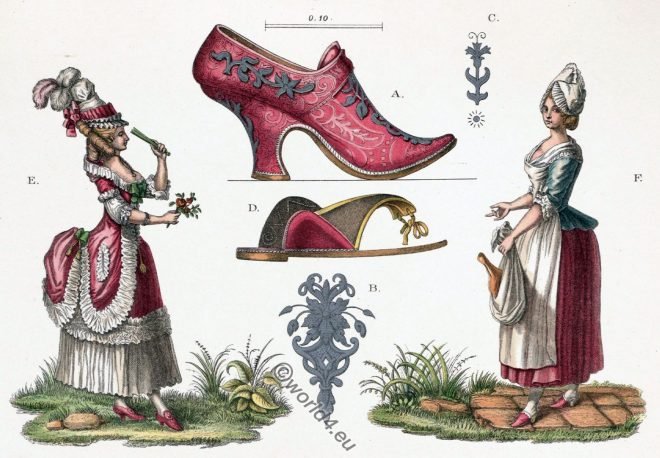Egypt. Hieratic paintings from Egypt and Nubia. Gods and Goddesses. Pharaos and Queens. The Schenti. The Klaft, Khat or Nemes headscarf. The Egyptian double crown. The Atef.
Oriental Rug of the second or third quarter of the sixteenth century.
Oriental Rug probably from northern Persia. The arrangement of the arabesques in the main field is one of the most ingenious in Persian rugs.
Egyptian and Asian chariots. Warfare, Weapons. Different Nations.
Egyptian and Asian chariots. Warfare. Arming of the various ancient Near Eastern peoples. Egyptian chariots lined up in a line on the battlefields.
The hoop skirt and its development within the history of costumes.
The hoop skirt in the age of the Spanish fashion (Renaissance) 16th century, in the age of rococo (Baroque), 18th century, crinoline fashion, 19th century.
The bourgeoisie and the lower classes under Louis XV.
France Rococo 18th century. The Casaquin, pet-en-l’air or Caraco. Costumes of the nobility. The bourgeoisie and the lower classes under Louis XV. Historical figures and fashion types.
Egyptian domestic appliances. Household utensils. Amphorae, vases.
Egyptian home appliances. Household utensils. The amphora, vases, vessels. Boxes of ointments and perfumes. The styles of the shovels.
Female fashions in the 14th, 15th and 16th centuries. Italian Renaissance.
Renaissance. Italian and Dutch types. Female fashions in the 14th, 15th and 16th centuries. The coloring of the hair in Venice.
Jewish clothing of antiquity. Levites. Jewish high priest.
Hebrew clothing of antiquity. Garment of a Jewish high priest with the hoschen. Levites. The history of costumes. Vestments of a Jewish high priest.
Victorian Era. Three fine specimens of the modern shoemaker’s craft.
Victorian Era. Shoemaker’s craft. The cordonnier artist (shoemaker, cobbler) has apparently considered his lines as carefully as the best of yacht builders.
Shoe fashion with high heels and rococo costumes. 18th century.
Female costumes from the 2nd half of the 18th century.


